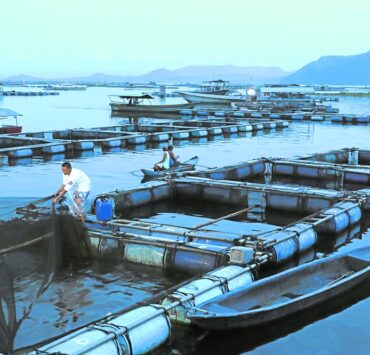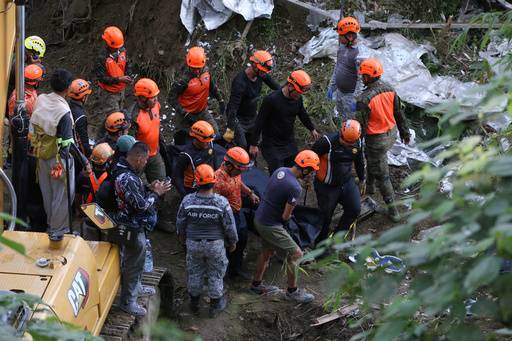Dumagueteños seeking action vs dirty air

DUMAGUETE CITY—Could residents of Dumaguete, touted as the safest city in the country by the World Travel Index, be breathing polluted air?
A group of zero-waste advocates here is asking the new local government for the “immediate closure” of the city-owned pyrolysis incinerator after a study found high levels of particulate matter (PM) five to eight times higher than the World Health Organization (WHO) standards.
The pyrolysis plant (a process of decomposing materials using extreme heat in the absence of oxygen) in Barangay Candau-ay was set up in 2021 by the administration of then Mayor Felipe Remollo, at a cost of about P22 million, to solve the problem of the proliferation of plastic materials in the city.
However, health expert Dr. Jorge Emmanuel, in a forum organized here on July 1 by the group War-on-Waste Negros Oriental, reiterated the long-term negative impacts of incineration to the health of the workers at the central materials recovery facility (MRF), and of the residents in the communities within a 5-kilometer radius.
Emmanuel is a senior research faculty fellow of the Silliman University Research and Innovation Office; and an adjunct professor at the Institute of Environmental and Marine Sciences, and at the College of Engineering and Design.
Until 2015, he was chief technical advisor of the United Nations Development Programme in New York. He also spearheaded projects dealing with waste in multiple countries, helped develop the guidelines for incineration under the Stockholm Convention on Persistent Organic Pollutants, and has served in the advisory committee on pyrolysis, gasification and incinerator regulations for the Air Quality Planning and Standards Office of the US Environmental Protection Agency.
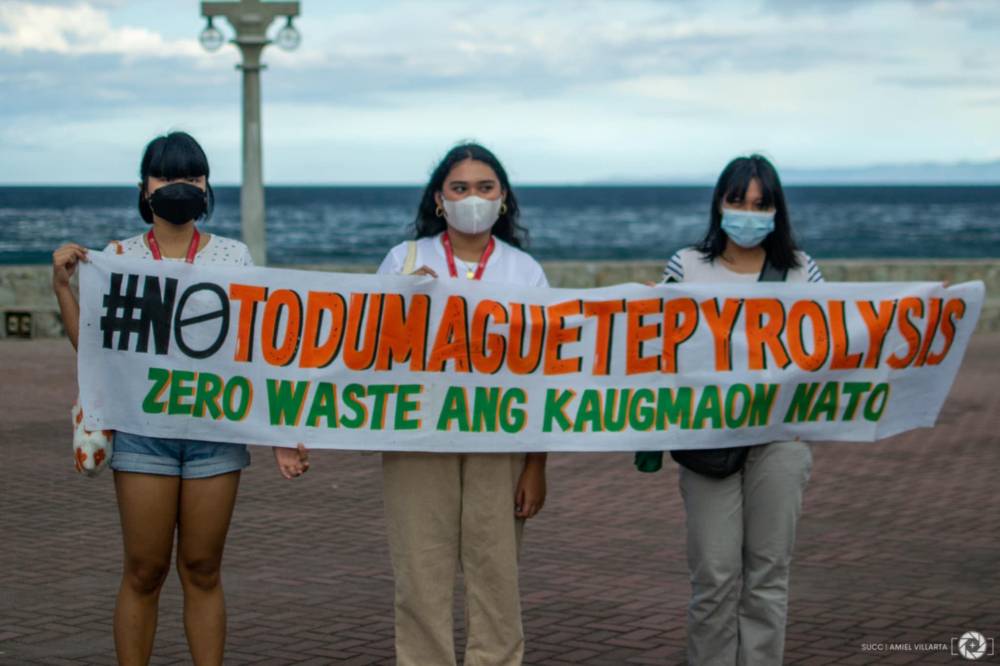
He said these so-called waste-to-energy incinerators emit 1.7 times more carbon dioxide than coal-fired plants; 2.5 times more than oil-fired plants; and 4.2 times more than gas plants.
An air quality monitoring project, conducted by the Global Alliance for Incinerator Alternatives (GAIA), and the War on Waste-Negros Oriental on at least 17 volunteers living or working in Barangays Candau-ay, Camanjac and Balugo found that the daily fine particulate matter (also called PM2.5) within their breathing zones “far exceeded” the WHO air quality guidelines.
Can’t be seen
The “citizen science” air quality monitoring project in Dumaguete, conducted from October 2024 to February this year in nearby schools, residential areas, local stores and farmlands is part of the first of its kind regional project conducted as well in Ogijo, Nigeria, and in Surabaya, Indonesia.
“Often, the burden of proving that industrial pollutants could cause harm are unjustly placed on poor communities,” lamented Emmanuel. “But technologies allow citizens to present incontrovertible evidence of exposures to toxic pollutants, and demand greater transparency and accountability.”
“PM2.5, which travels many kilometers, cannot be seen by the naked eye, and are linked to premature deaths,” Emmanuel said.
He said incinerators also release ‘highly-toxic pollutants” (dioxins, acid gases, toxic metals, toxic ash, carbon monoxide and wastewater).
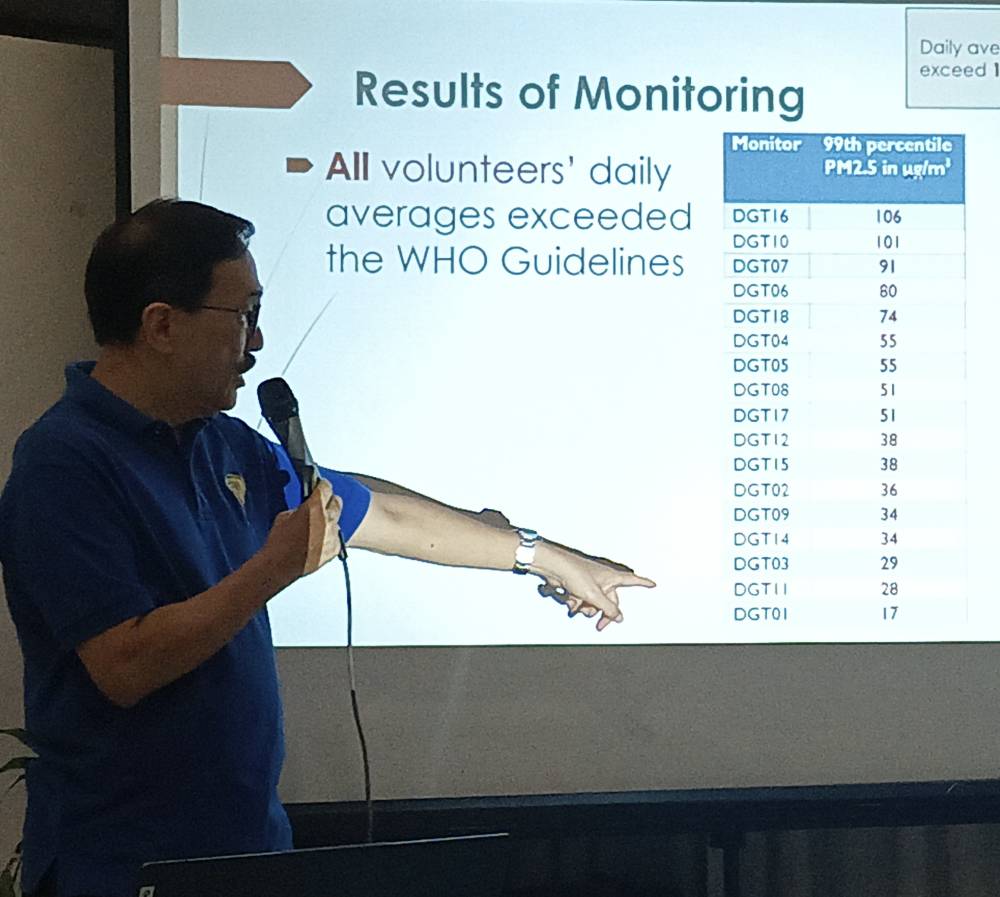
Based on the results, Emmanuel said they computed the air quality index of Dumaguete and further found that out of the 33 days of monitoring, 17 were considered “unhealthy for the general population, including those with asthma or heart disease;” 14 days were “unhealthy for highly-sensitive” persons; and two days had “good” air quality.
The air quality index is a tool used by the US Environmental Protection Agency to relate air pollutant concentrations to heal-based ambient standards.
Precautionary principle
Emmanuel warned that more than a dozen studies on the health impacts of incinerators around the world found increased risks of cardio-pulmonary disorders, cancers, uneven development of children, miscarriages and birth defects. Studies among incinerator workers also found high levels of toxic substances, DNA damage, low sperm count and high stomach cancer deaths.
He urged the newly-installed administration of Mayor Manuel “Chiquiting” Sagarbarria to stop the use of the central MRF as a dumpsite for mixed-waste, and enforce strict segregation from the homes.
Segregation-at-source is mandated in Republic Act No. 9003 or the Ecological Solid Waste Management Act.
Solid waste advocates said the new executive leadership must promote zero-waste approaches in all barangays.
Emmanuel said their serious recommendations are “in keeping with the Precautionary Principle,” and to protect public health and the environment.
For years, the unsegregated waste had been piling up in Barangay Candau-ay. While it was a source of income for trash pickers, it also posed threats to the community: emissions of methane (greenhouse gas) produced by the mixed waste, and the constant noxious odors.
The city government response then was to establish and operate a pyrolysis-gasification machine to burn the plastics, and make them into usable items like bricks, pavers and chairs.
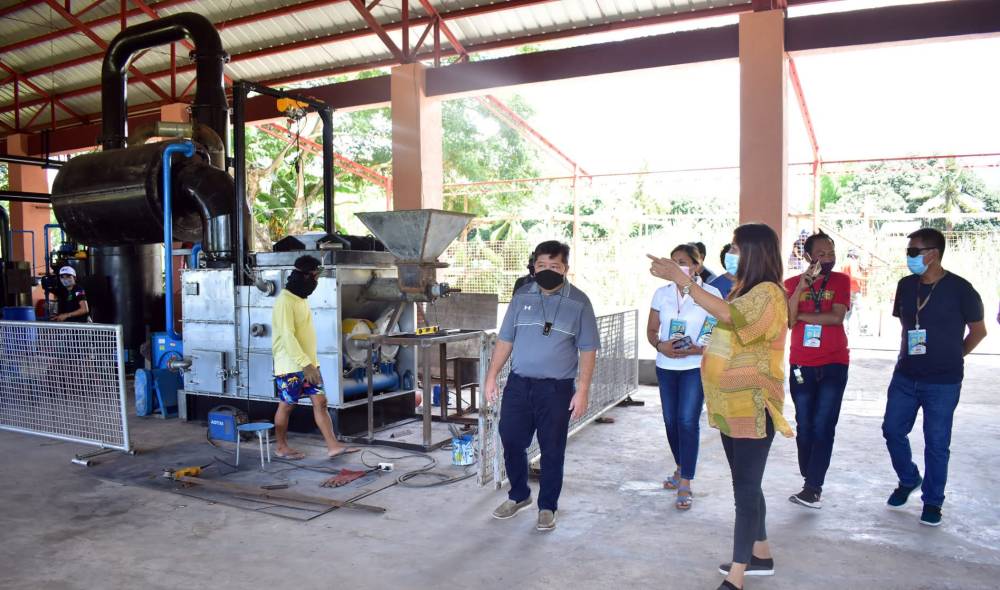
Most toxic
According to Emmanuel, aside from PM2.5, the pyrolysis machine releases many other pollutants including dioxins, “the most toxic chemical known to science.”
He said over 162,800 people from 21 Dumaguete barangays, 13 villages in Sibulan town, and 17 villages in Valencia are also at risk.
Sought for comment, Sagarbarria said he intends to look into the findings of the study, adding that a healthy environment is one of his priorities.
During the second regular session of the new Dumaguete City Council on July 8, it was learned that the Department of Environment and Natural Resources-Environmental Management Bureau (DENR-EMB) had sent a letter to former Mayor Remollo, inviting the city for a “technical conference” regarding at least seven violations to the environmental compliance certificate (ECC) for the city’s MRF, which houses the pyrolysis machine.
The letter, received by the mayor’s office on June 26, was based on an inspection conducted by the DENR-EMB on May 15, which found that the MRF had “violated several conditions of its ECC.”
Two of the violations include the failure to secure DENR ID registration as “hazardous waste-generator,” and for failure to secure a discharge permit for the wastewater.
Immediately after the session, Sagarbarria ordered City Environment and Natural Resources Officer Chilvier Patrimonio and Economic Enterprises Officer Leticia Duran to meet with EMB Region 7 personnel in Cebu on the matter.















